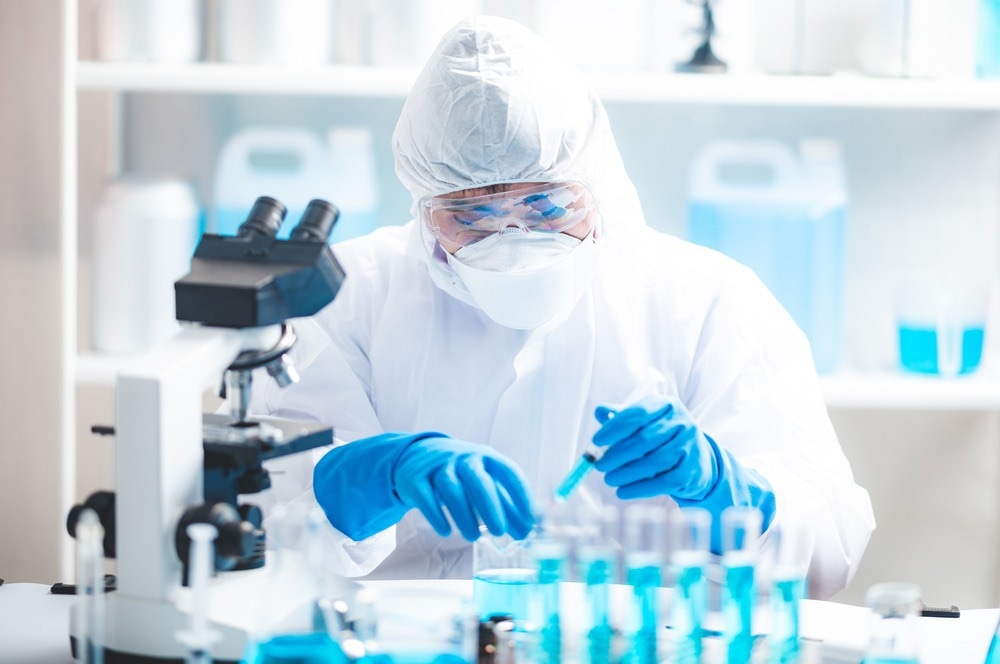Prof. Haojun Liang of the Chinese Academy of Sciences’ (CAS) University of Science and Technology of China (USTC) suggested a new way to escape from metastability for self-assembly in a far-from-equilibrium system. The study was published in the journal PNAS.

Image Credit: Chokniti-Studio/Shutterstock.com
The process by which assembled primitive constituents (molecules, nanoparticles, etc.) spontaneously create ordered structures through non-covalent interactions is referred to as self-assembly.
Its exceptional ability to produce novel materials has attracted interest. The system will attain a thermodynamically stable state with the lowest free energy and build a high-quality assembly structure in an ideal assembly process.
However, when an assembly system is far from the equilibrium state, it is more likely to become trapped in metastability where the local free energy is extremely low, which prevents the development of a high-quality assembly structure.
The question of how to avoid metastability in a system that is out of equilibrium is seen as a difficult conundrum in the field of self-assembly. The entropy-controlled thermal annealing technique is a well-established and widely used method of escaping from metastability for DNA-functionalized nanoparticle assembly, a typical far-from-equilibrium system.
Nevertheless, during annealing, nanoparticles typically aggregate and disperse across a limited temperature range. Thermal energy has no preference when it comes to repairing broken, non-covalent connections. The assembly of biologically active particles or under physiological circumstances is incompatible with thermal annealing.
Prof. Liang and his colleagues revealed a new method to accomplish catalytic assembly of DNA-functionalized colloidal nanoparticles in a far-from-equilibrium environment, which was inspired by the idea of catassembly put forth by academician Zhongqun Tian from Xiamen University.
They used a removable molecule called “catassembler,” which acts as a catalyst, to adjust imperfect linkages and help the system escape from metastability while maintaining assembled framework. This was done based on their theoretical simulation prediction and previous research findings on the constant enthalpy control strategy for nanoparticle assembly.
The non-covalent bond of the incorrect connection could be corrected by the temporary DNA strand replacement reaction, helping the system to escape metastability. In this strategy, the short DNA strand posing as the accelerator has a direct competitive effect with the bonding end on the surface of the nanoparticles inside the assembly structure.
The assembly structure’s general skeleton would not be damaged throughout the procedure, and the accelerator could be taken out of the finished assembly structure. Furthermore, by altering the accelerator’s structural layout, it may be possible to increase the accelerator’s effectiveness while lowering its dose.
According to the same theory, it is also possible to create superlattice structures with various crystal symmetries by altering the kernel type of nanoparticles in a two-component system and adding the appropriate DNA accelerator right away after designing the DNA sequence.
This method makes it simple to perform the assembly of nanoparticles since the chemical reaction takes place at a consistent temperature.
After overcoming the limitations of temperature regulation and the initial phase state free energy, the “solid-solid” phase change between distinct colloidal crystals becomes easier to perform due to the simple and efficient nature of this DNA accelerator regulating technique.
It demonstrates its potential for use in “solid-solid” phase transition bio-inorganic composites that are structurally reconfigurable.
The accelerator strategy suggested in this study is anticipated to be expanded to the control and design of assembly processes for other soft material systems (polypeptides, block copolymers, etc.) that are outside of equilibrium as a general method for regulating non-covalent interactions within assembly structures.
Source:
Journal reference:
Yao, D., et al. (2023). Catalytic-assembly of programmable atom equivalents. PNAS. doi.org/10.1073/pnas.2219034120